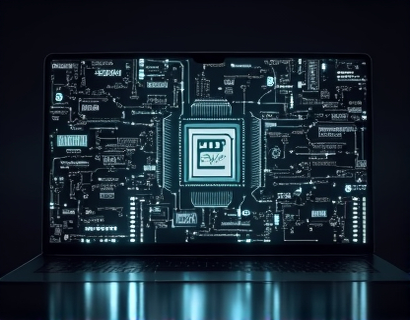Streamlining Government and Organizational Administration: Innovative Software Solutions for Leaders
In the modern era, government and organizational leaders face an array of challenges that demand efficient, effective, and innovative solutions. The complexity of administrative tasks, the need for enhanced decision-making, and the imperative to foster collaboration are more critical than ever. This article delves into how advanced software solutions can transform the landscape of government and organizational administration, providing leaders with the tools necessary to achieve greater operational success and modernize their practices.
The Need for Streamlining Administrative Processes
Government and organizational administration involves a multitude of tasks, from budget management and resource allocation to policy implementation and public service delivery. These processes are often cumbersome, time-consuming, and prone to errors. The traditional methods of managing such tasks can lead to inefficiencies, delays, and a lack of transparency. Leaders are increasingly recognizing the need for streamlined administrative processes that can enhance productivity, reduce costs, and improve service delivery.
How Software Solutions Can Transform Administration
Innovative software solutions are at the forefront of transforming government and organizational administration. These tools leverage cutting-edge technologies such as artificial intelligence, machine learning, and cloud computing to simplify complex tasks and provide real-time insights. By automating routine processes, these solutions free up valuable time for leaders to focus on strategic decision-making and innovation.
Automation of Routine Tasks
One of the most significant benefits of software solutions in administration is the automation of routine tasks. Tasks such as data entry, report generation, and compliance checks can be automated, reducing the risk of human error and freeing up staff to focus on more critical activities. For instance, automated data entry systems can integrate with various sources to pull in data seamlessly, ensuring accuracy and saving countless hours of manual work.
Enhanced Decision-Making
Data-driven decision-making is crucial for effective governance. Advanced software solutions provide leaders with powerful analytics tools that can process large volumes of data quickly and accurately. These tools offer insights that were previously difficult to obtain, enabling leaders to make informed decisions based on real-time data. For example, predictive analytics can forecast trends and outcomes, helping leaders anticipate challenges and seize opportunities.
Improved Collaboration and Communication
Collaboration and communication are essential for the smooth functioning of any organization. Software solutions designed for government and organizational administration often include collaborative features that facilitate seamless communication among team members. Cloud-based platforms allow for real-time document sharing, project management, and task assignment, ensuring that everyone is on the same page. This level of collaboration not only enhances efficiency but also fosters a culture of teamwork and transparency.
Resource Management and Optimization
Effective resource management is vital for the sustainability and success of any organization. Software solutions can help leaders optimize resource allocation by providing detailed visibility into asset utilization, budget spending, and personnel deployment. For example, asset management systems can track the usage and maintenance of equipment, ensuring that resources are used efficiently and cost-effectively. Budget management tools can provide real-time tracking of expenditures, helping leaders stay within budget and identify areas for cost savings.
Case Studies: Successful Implementation of Software Solutions
Several government and organizational entities have successfully implemented innovative software solutions, reaping significant benefits. These case studies highlight the transformative impact of technology on administrative processes.
Case Study 1: City Government
A mid-sized city implemented a comprehensive government management software to streamline its administrative processes. The software integrated various departments, including finance, public works, and public safety, into a single platform. As a result, the city saw a 30% reduction in processing time for permits and licenses, and a 25% decrease in administrative errors. The platform also improved citizen engagement through an online portal, allowing residents to submit requests and track the status of their applications in real-time.
Case Study 2: Non-Profit Organization
A large non-profit organization adopted a project management and collaboration tool to enhance its operations. The tool enabled seamless communication among team members, centralized project documentation, and provided real-time progress tracking. The organization reported a 40% increase in project completion rates and a significant reduction in project delays. The tool also facilitated better donor engagement through transparent reporting and updates.
Key Features of Effective Software Solutions
To truly transform government and organizational administration, software solutions must possess certain key features. These features ensure that the tools are not only functional but also user-friendly and scalable.
User-Friendly Interface
A user-friendly interface is essential for the widespread adoption of software solutions. Leaders and staff must find the tools intuitive and easy to navigate. A well-designed interface reduces the learning curve and encourages regular use, maximizing the benefits of the software.
Scalability and Flexibility
Organizations of all sizes and types have unique needs. Software solutions must be scalable to accommodate growth and flexible enough to adapt to changing requirements. This ensures that the tools remain relevant and effective over time, supporting the organization through various stages of development.
Integration Capabilities
Integration with existing systems and third-party applications is crucial for a seamless transition. Software solutions should offer robust APIs and integration options, allowing for smooth data exchange and process automation. This integration capability ensures that the new tools complement rather than disrupt the existing infrastructure.
Challenges and Considerations
While the benefits of software solutions are clear, there are several challenges and considerations that leaders must address to ensure successful implementation.
Data Security and Privacy
Data security and privacy are paramount concerns, especially for government entities handling sensitive information. Software solutions must comply with relevant regulations and standards, such as GDPR and HIPAA, to protect data from breaches and unauthorized access. Leaders must prioritize security measures and conduct regular audits to ensure compliance.
Change Management
Implementing new software solutions often requires significant changes to existing workflows and processes. Effective change management is essential to ensure a smooth transition. Leaders should involve stakeholders in the implementation process, provide comprehensive training, and offer ongoing support to address any concerns and resistance.
Cost Considerations
While the long-term benefits of software solutions can be substantial, the initial cost can be a barrier for some organizations. Leaders should conduct a thorough cost-benefit analysis, considering not only the upfront costs but also the potential savings and efficiency gains. Exploring cloud-based options and subscription models can help manage costs and provide flexibility.
Future Trends in Administrative Software
The landscape of administrative software is continually evolving, driven by advancements in technology and changing organizational needs. Leaders should stay informed about emerging trends to stay ahead of the curve.
Artificial Intelligence and Machine Learning
AI and machine learning are set to play an increasingly significant role in administrative software. These technologies can enhance automation, provide deeper insights through predictive analytics, and even assist in decision-making. Leaders should explore AI-powered tools that can further optimize their administrative processes.
Internet of Things (IoT)
The IoT is transforming how organizations manage physical assets and infrastructure. IoT devices can provide real-time data on asset status, usage, and maintenance needs, enabling proactive management and optimization. Integrating IoT with administrative software can offer a holistic view of operations and enhance resource management.
Conclusion
In conclusion, innovative software solutions offer government and organizational leaders powerful tools to streamline administration, enhance decision-making, and foster collaboration. By automating routine tasks, providing data-driven insights, and enabling seamless communication, these solutions can significantly improve operational efficiency and effectiveness. As technology continues to advance, leaders must embrace these tools to modernize their practices and achieve greater success in an increasingly complex world.










































